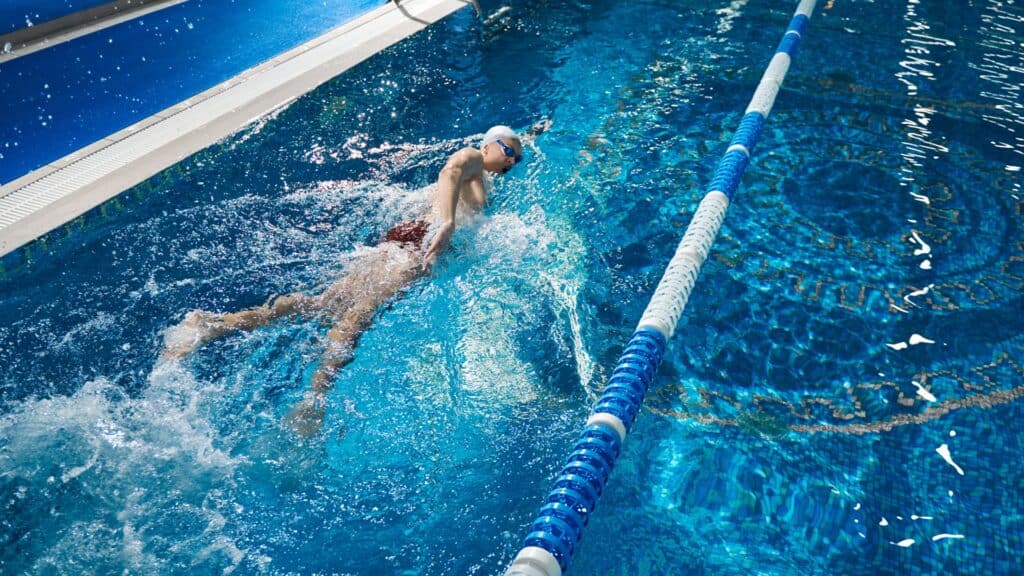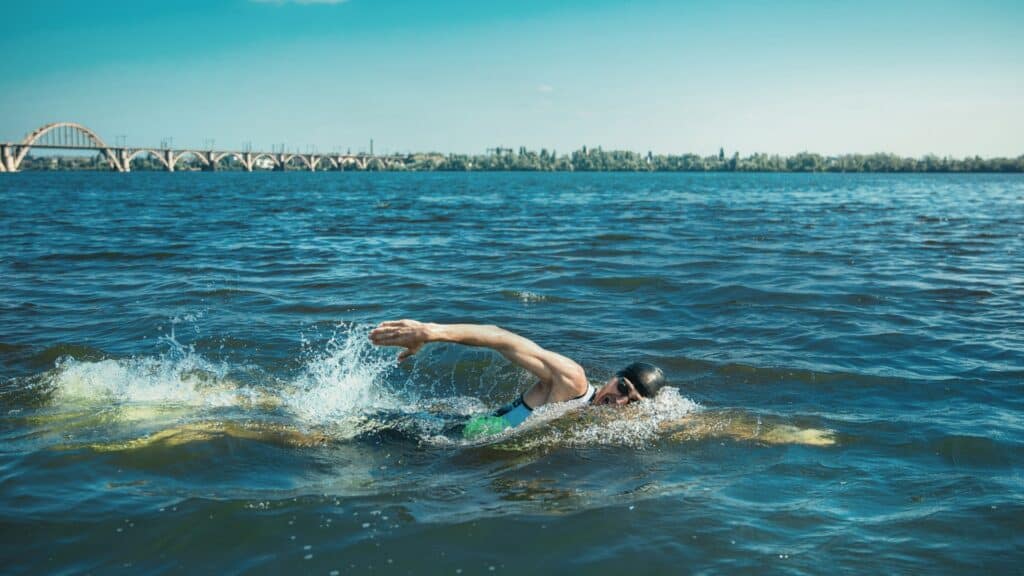Proper nutrition is crucial for any triathlete, and it’s often referred to as the “fourth discipline” of the sport. However, the swim leg of a triathlon presents unique challenges since you can’t eat or drink during this part of the race. How can you ensure you have enough energy for the swim, especially in longer races like Ironman?
In this article, we share some valuable tips and strategies to help you manage your nutrition effectively.

Preparing for the Swim: Pre-Race Nutrition
Timing of Breakfast:
- 3-4 Hours Before the Race: If you’ve had breakfast well in advance, your body will have had enough time to digest, providing a stable energy reserve.
- 1-2 Hours Before the Race: A closer breakfast might require a lighter meal, as a heavy stomach can cause discomfort during the swim.
Using Gels:
- Sprint and Olympic Distances: For shorter races, having a gel before the swim can be beneficial, but it depends on your stomach’s reaction. Some athletes find that consuming a gel just before swimming makes them nauseous.
- Ironman Distance: Given the 3.8-kilometer swim, your pre-race meal and how well you handle gels play significant roles. If your stomach can tolerate it, a gel before the swim might be helpful, but many athletes prefer to save it for later stages of the race.
During the Transition: Effective Nutrition Strategies
Transition 2 (T2) Tips:
- Gels in Transition: Place a gel in your transition bag. Consume it as you move from the swim to the bike. This strategy works well because you transition from the swim, where you can’t consume anything, to the bike, where you have more flexibility.
- Hydration: After taking the gel, a small sip of water can help it go down smoothly and start fueling your muscles as you begin the bike leg.

Testing Your Nutrition Plan
It’s essential to practice your nutrition strategy during training to avoid any race-day surprises:
- Simulate Race Conditions: Experiment with your nutrition in training. If you swim in the mornings, try having breakfast three hours before and then a gel right before your swim. Alternatively, try eating two hours before and skipping the gel to see how your body reacts.
- Adjust Based on Reactions: Note how your stomach feels and your energy levels. This practice helps you fine-tune your nutrition plan so that you don’t introduce anything new on race day.
Summary of Key Tips
- Breakfast Timing: Ensure your pre-race meal is timed to allow for proper digestion.
- Gel Use: Test how your stomach handles gels before swimming. For longer races like Ironman, consider saving the gel for the transition.
- Transition Nutrition: Have a gel ready in your transition bag and consume it with a small amount of water as you move to the bike.
- Training Practice: Use training sessions to test and refine your nutrition strategy, ensuring no surprises on race day.

Additional Training Resources
For more structured triathlon training programs and personalized advice, consider joining the CoachParry Training Platform. You’ll gain access to a wide range of programs from sprint to full Ironman distances, as well as forums to discuss your strategies with experienced coaches.
Training Programs:
- Explore a variety of triathlon training programs tailored to your specific race distance and experience level. From beginners to advanced Ironman athletes, there’s a program to suit everyone.
By following these nutrition strategies and preparing diligently, you can ensure that you have the energy and stamina needed to perform your best during the swim leg of your triathlon. Happy training and racing!



Comments are closed.